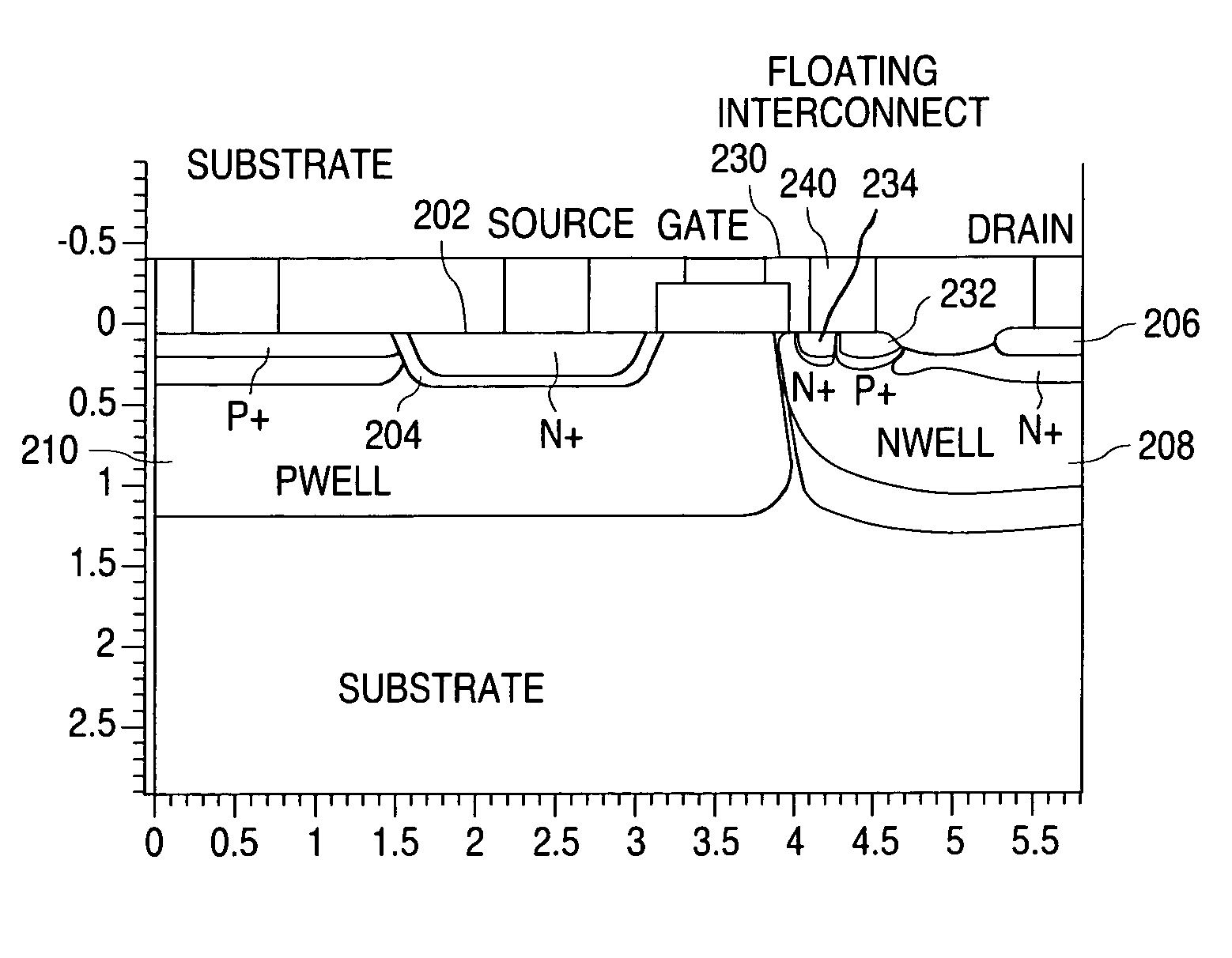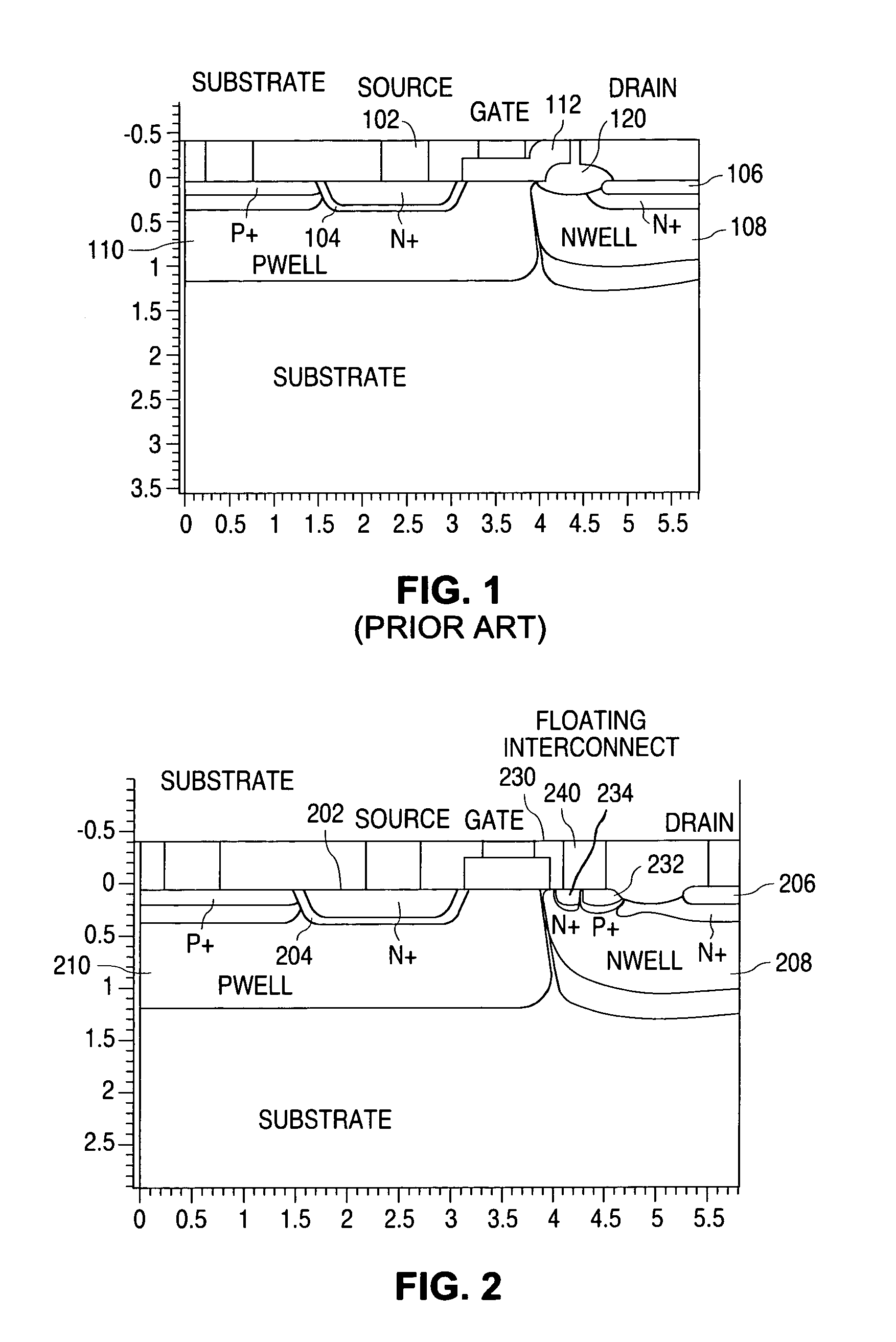Method and structure for addressing hot carrier degradation in high voltage devices
- Summary
- Abstract
- Description
- Claims
- Application Information
AI Technical Summary
Benefits of technology
Problems solved by technology
Method used
Image
Examples
Embodiment Construction
[0011]FIG. 2 shows one embodiment of the invention. As in the prior art LDMOS device of FIG. 1, the present embodiment of an LDMOS 200 has a source 202 formed in an n-well 204, and a drain 206 formed in an n-well 208. However, in accordance with the invention the thick field oxide 120 of the prior art, which reduces the surface field alongside the gate polysilicon, has been eliminated. This alleviates hot carrier degradation (HCD) since it eliminates a region that traps injected charge carriers. In order to create a reduced surface field (RESURF) in spite of the elimination of the thick field oxide the present embodiment introduces a p-doped region in the form of a p+ region 232 and a n-doped region in the form of a n+ region 234, alongside each other in the n-well 208. The p+ region 232 and n+ region 234 in this embodiment are shorted to each other by a floating interconnect 240, and the interconnect 240 is isolated from the polysilicon gate 212 by an oxide layer 230. Since the pre...
PUM
 Login to View More
Login to View More Abstract
Description
Claims
Application Information
 Login to View More
Login to View More - R&D
- Intellectual Property
- Life Sciences
- Materials
- Tech Scout
- Unparalleled Data Quality
- Higher Quality Content
- 60% Fewer Hallucinations
Browse by: Latest US Patents, China's latest patents, Technical Efficacy Thesaurus, Application Domain, Technology Topic, Popular Technical Reports.
© 2025 PatSnap. All rights reserved.Legal|Privacy policy|Modern Slavery Act Transparency Statement|Sitemap|About US| Contact US: help@patsnap.com



